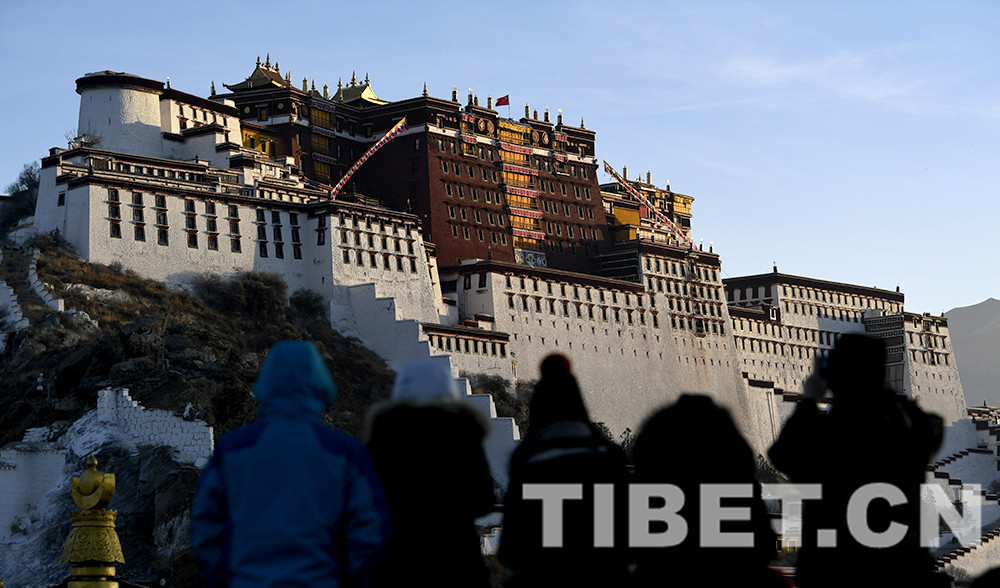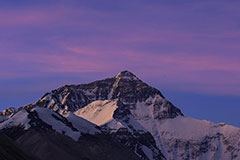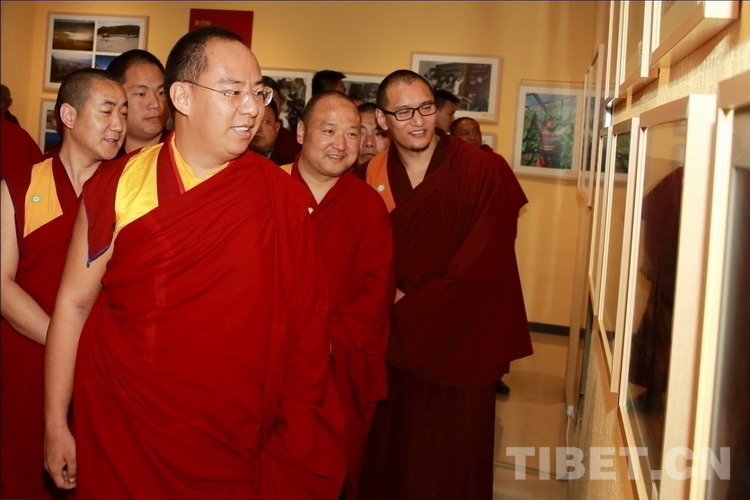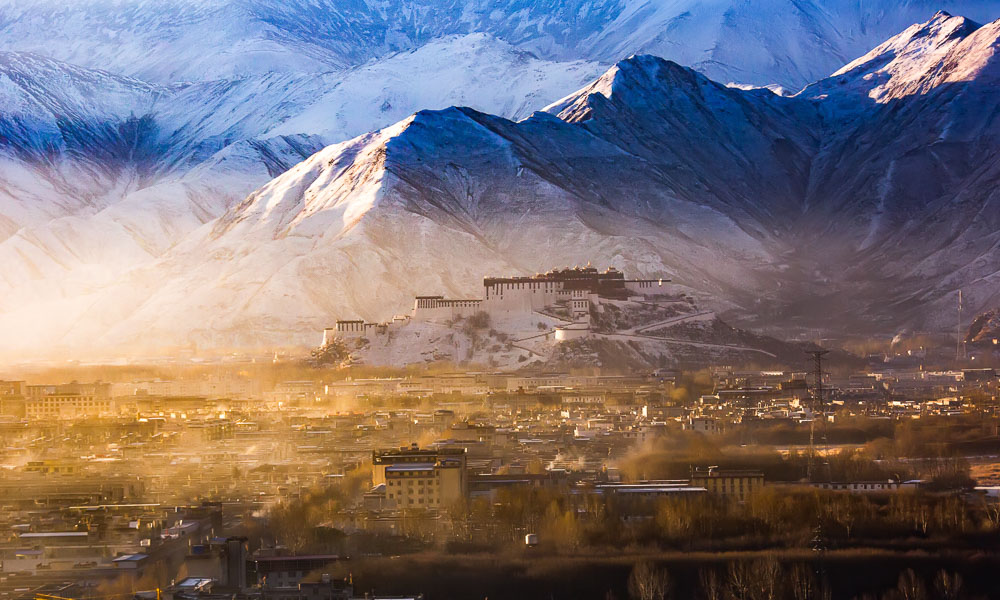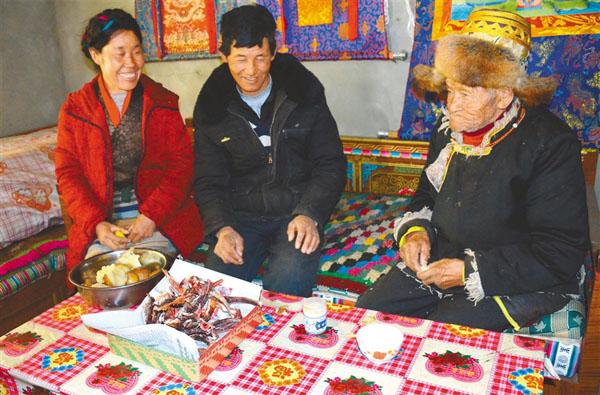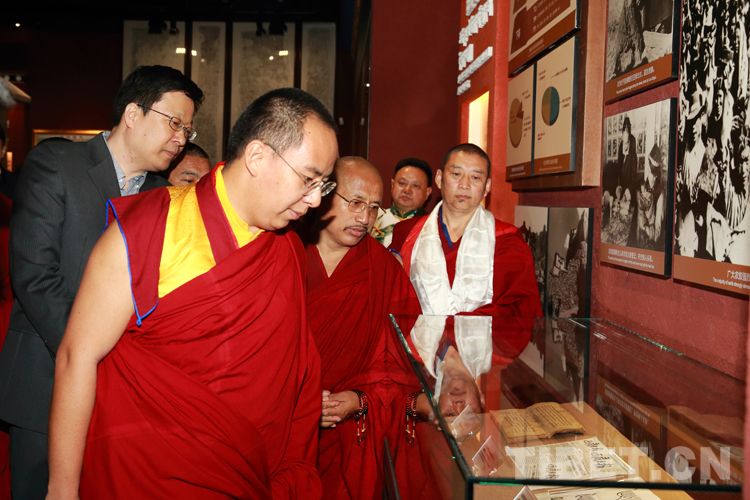Tibet shows it cares for a cleaner Mt Qomolangma
Namgyal carries some essential equipment along with him while working on the Tibetan plateau - a pair of gloves, a garbage clip and environmental bags. With the annual spring mountain climbing activity having begun already in this region, he is busy these days.
He is different from those who travel long distances to catch a glimpse of the world's highest mountain Qomolangma (known in the West as Mount Everest), whose climbing season usually begins in early April.
Namgyal, 38, a semi-nomad living in the Chozom village of Tibet autonomous region's Dingri county, which is located at Qomolangma, calls himself an environmental guardian.
He is one of the 156 residents from his village involved in protecting the mountain.
In 2015, President Xi Jinping called on the people to protect environment as they would their own eyes and care for environment as they would their own lives. He again stressed the importance of ecological protection this year, calling for the pursuit of harmony between man and nature.
Local authorities have pledged strict measures to control pollution. On Dec 5, 2018, the Mount Qomolangma Nature Reserve Administration in Tibet's Dingri county banned ordinary tourists from entering the core zone beyond Rongbo Monastery.
Qi Zhala, chairman of the regional government, said the management of natural reserves will be strengthened this year, with mining prohibited in natural reserves and spending increased on ecological protection.
As part of its efforts to maintain the region as one of world's "purest landscapes", the regional government - with environmental protection as its priority - announced ecology awards and subsidies in 2016.
As a result, 667,000 rural residents of the region were provided with jobs related to environmental protection in 2018, according to the region's Government Work Report in January.
The annual subsidy for rural residents for ecology protection is 3,500 yuan ($500).
Namgyal said he was pleased with the policy of providing environmental protection jobs to rural residents since 2016, which has helped keep nature clean and increase income for his family.
In the past, cleanup activity was taken up only during summer near Mount Qomolangma. Since 2016, Namgyal said, it has been done on a regular basis.
"With tourism booming, I hope more garbage bags would be given out to tourists and more trash bins placed along roads near tourist sites," said Namgyal, who works regularly to collect waste near Mount Qomolangma.
He performs this task along with his team seven to eight times every month.
"We clean up areas near the Qomolangma Base Camp, the Rongbo Monastery, and places near our village," said Namgyal, adding that the garbage collected mostly includes beverage bottles and plastic.
He also helps to collect waste during the spring climbing season. The cleaning of areas between the altitudes of 5,200 and 6,500 meters will mostly be carried out by locals, while the cleaning of areas above 6,500 meters will be carried out by mountaineering professionals.
The waste above 5,200 meters is produced by climbers, while trash at lower areas is mostly generated by locals and tourists.
Surrounded by snow-capped mountains and glaciers, Tibet is one of the world's finest destinations for climbers and explorers.
With five peaks above 8,000 meters, more than 70 above 7,000 meters, and over 1,000 above 6,000 meters, the region has China's highest peaks and has produced outstanding climbers who have represented the country in top mountaineering expeditions.
The cleanup work in Tibet's mountainous regions was initiated in 1997. According to the Tibet Sports Bureau, 8.4 metric tons of mountaineering related trash were collected from three large-scale cleanup projects last year on three mountains, including Qomolangma, Shishapangma and Cho Oyu. And more than 1 million yuan was spent on the effort.
The collected waste included beverage bottles, plastic bags, food packages, discarded oxygen cylinders, old tents and excrement. Simple dry latrines at the Qomolangma Base Camp were cleaned in 2018.
Nyima Tsering, head of the Tibet Sports Bureau, said it was important to protect the world's tallest mountain, which has drawn global attention, from pollution.
As per latest regulations, the region is halting all mountaineering activity in the autumn climbing season of 2019. It will be allowed only during the spring season.
In 2018, the region brought down the number of climbers to Mount Qomolangma by one-third. The number will be kept to within 300 in 2019, as per the plan.
Nyima Tsering, who is also the captain of the China Mountaineering Team (Tibet), said the restriction on the number of climbers will see a decline in the number of mountaineering service staff.
"We want to encourage climbers to bring down all the waste they produce because it is difficult to clean up at high altitudes," he said.
Gao Minghe, a climber and photographer from China's Taiwan who climbed Qomolangma in 1992 from the northern slope, suggested strict rules to prevent climbers littering the mountain.
"Climbers can be charged a fee for waste disposal. It can be refunded if they bring back all personal items inspected and listed by inspectors before the climbing expedition, including food packages and equipment," Gao said. "Or they may be banned from climbing activities from one to three years."
Tibet Stories
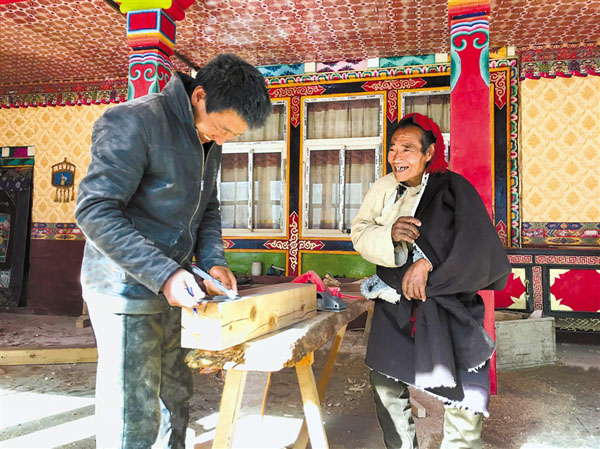
Former serf Sonam Ngodrup: Can't forget the hard days of sleeping in the sheep pen
"Now the days are getting better and better. If I get sick, I have medical insurance. Housin...
Editor’s Choice
- The United States' new tactics of interfering in the internal affairs of China
- Prominent Belgian sinologist says nobody can deny rapid economic development of Tibet
- Tibet's cultural industry sees sound development
- 11th Panchen Lama: abolition of serfdom engraved in the minds of the people
- Eco-friendly toilet to be set up at 7,028m on Mt. Qomolangma
